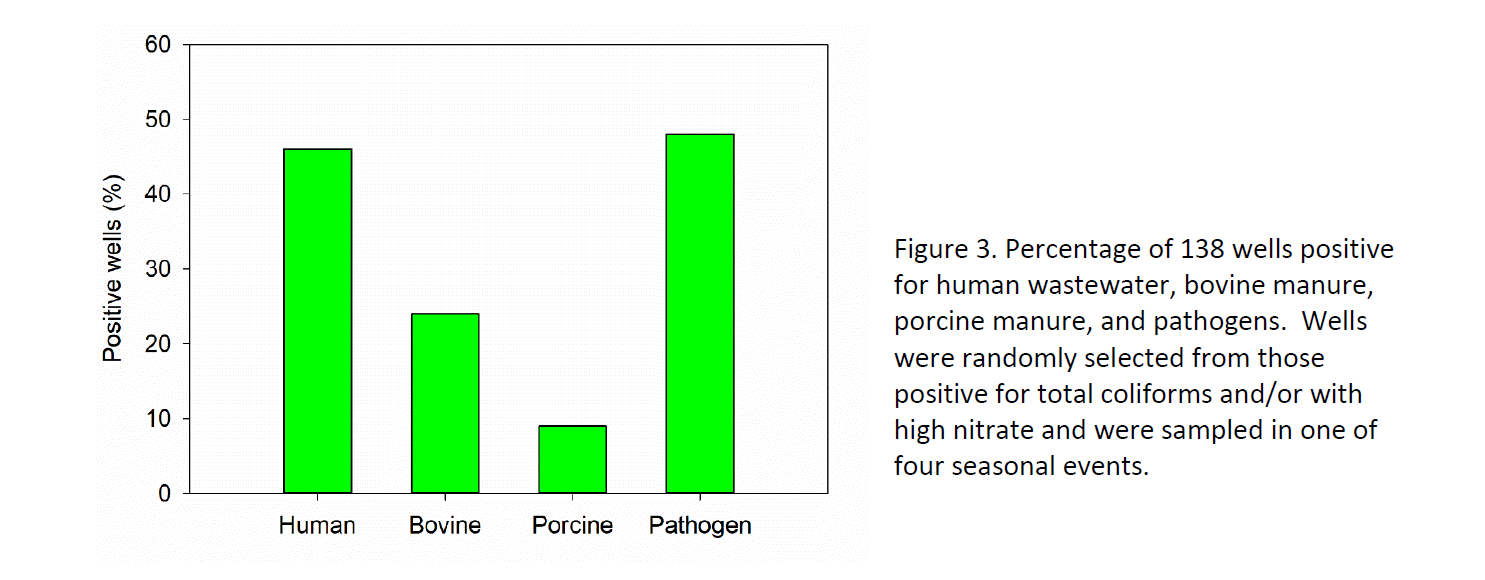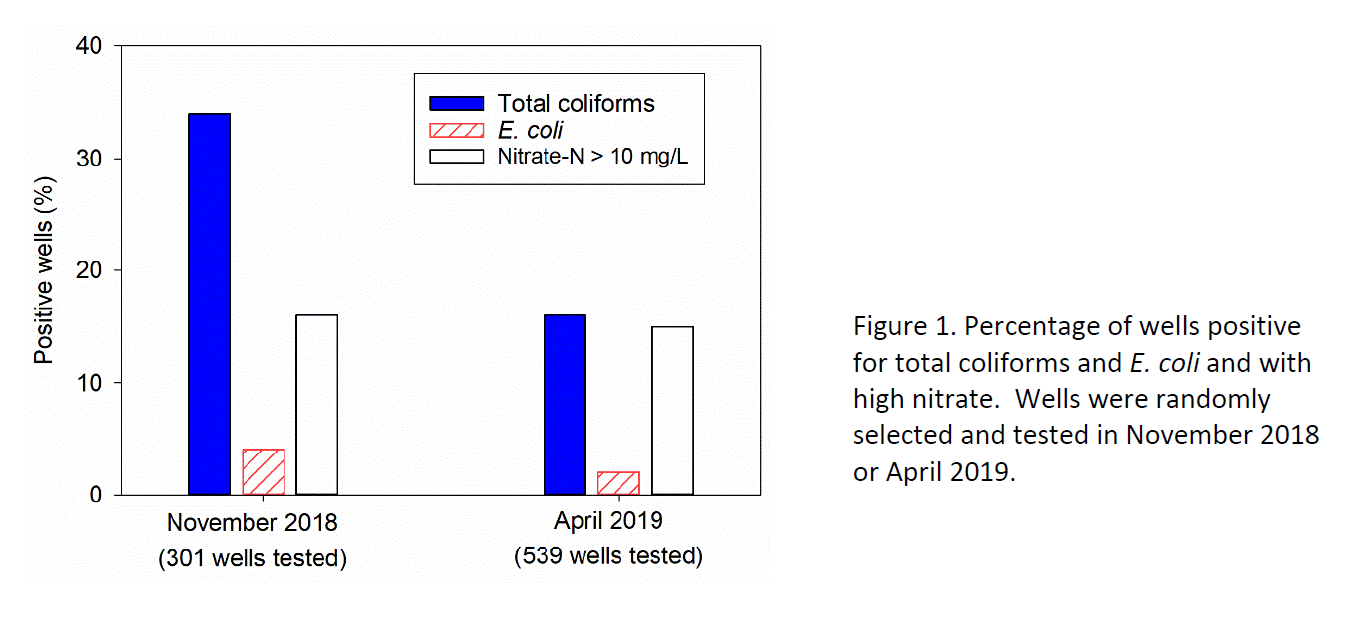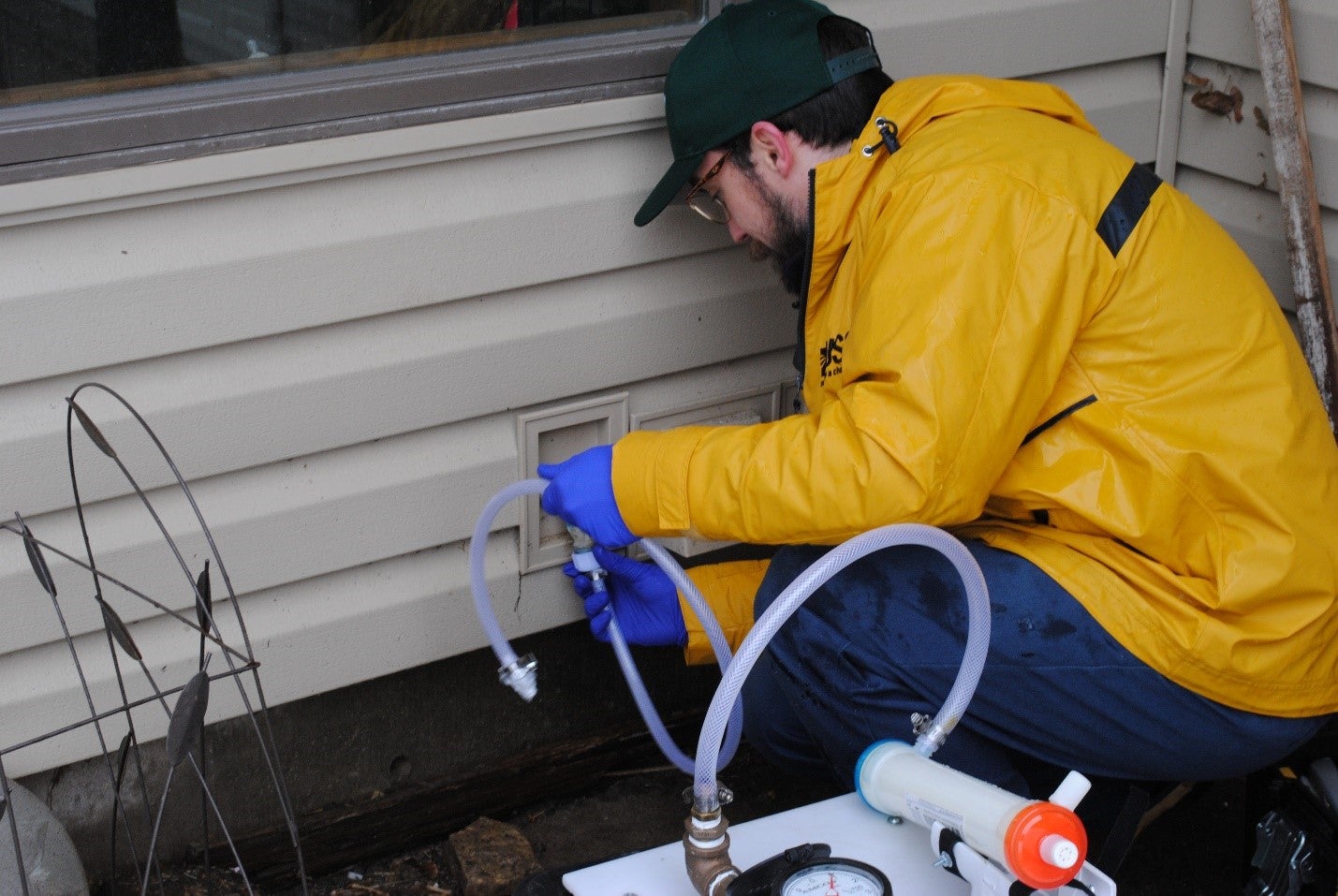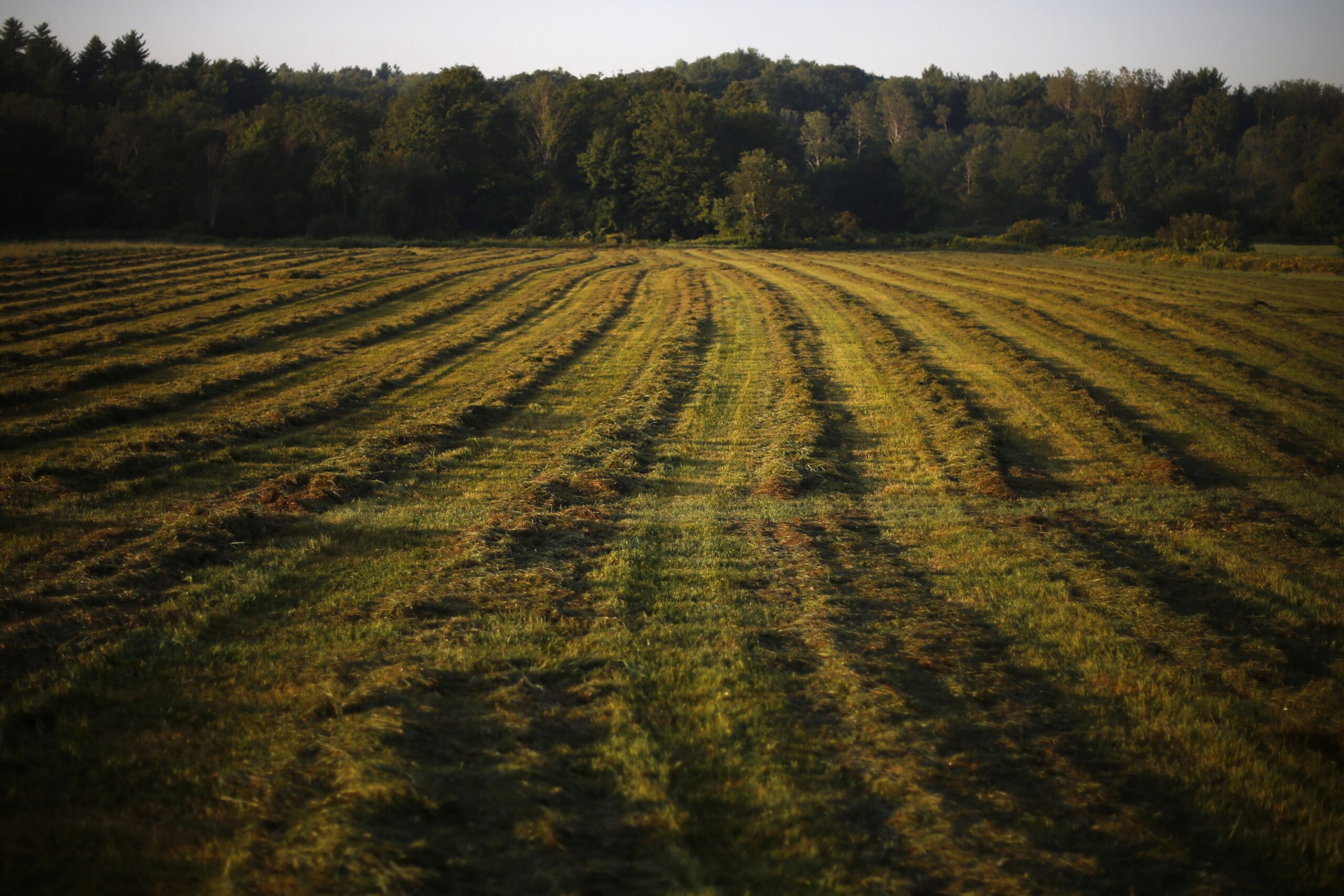A landmark study of groundwater contamination in southwest Wisconsin’s private wells has come to a close, but county officials and scientists say it’s only the first step in helping residents deal with vulnerable wells.
The Southwest Wisconsin Groundwater and Geology, or SWIGG, study tested 978 samples from 816 private wells in Grant, Iowa and Lafayette counties during 2018 and 2019. It also looked at how the geology of the region and the types of wells and septic systems could affect local contamination levels.
Researchers presented their final report during a public presentation in Lancaster on Tuesday.
News with a little more humanity
WPR’s “Wisconsin Today” newsletter keeps you connected to the state you love without feeling overwhelmed. No paywall. No agenda. No corporate filter.
The study found 32 percent of tested wells had levels of total coliform bacteria or nitrates greater than standards set by the state and the U.S. Environmental Protection Agency. That’s a higher percentage than statewide averages for private wells.
Further testing of 138 wells that were previously found to have contamination showed 64 wells had human waste, 33 wells had cattle manure and 13 wells had pig manure.

Researchers also identified key factors that can influence a well’s water quality. They found that the level of contamination tends to be higher in older and shallower wells and where there is shallower bedrock. Contamination levels were also higher when closer to cultivated farmland, livestock farms and septic systems.
Conducted by researchers from the U.S. Department of Agriculture, U.S. Geological Survey and the Wisconsin Geological and Natural History Survey, the authors say the study is “one of the largest and most comprehensive private well studies in the nation.”
“The size, the scope of this study and the factors we looked at, particularly in terms of microbial contamination, will be novel and will be a good contribution to groundwater science overall,” said Joel Stokdyk, a biologist with the U.S. Geological Survey, and an author of the study.
Stokdyk said he thinks one of the biggest takeaways from the report is that both private septic systems and agriculture are introducing contaminants into local groundwater. He said wells with high nitrate levels were associated with nearby agricultural land use, while human wastewater was more commonly detected in wells with fecal contamination.
“If you want to say ‘What was the biggest cause of contamination?’, you have to start by specifying which contamination are we talking about,” Stokdyk said. “The factors can differ based on the contaminant because they have different sources and they behave differently when they’re moving to and through the groundwater. That idea, it’s not quite as simple and nice, but you know, that’s the message that I hope folks understood.”
He said the researchers didn’t make any policy recommendations as part of their report, but he said he believes the data could help local officials figure out what contaminants or environmental factors are priorities for their communities and develop specific policies and management practices in response.
“We have a relationship that shows for each additional septic system nearby, how much does the probability of contamination increase. And a relationship like that could be useful for thinking about minimum lot sizes for a subdivision or setback distances, things of that nature that can be very practical,” he said. “The same is true for the agricultural land use factors. We have specific quantitative relationships that show, for example, the association between the probability of high nitrate, how that probability goes up for every additional acre of agricultural land that’s near the well.”

Iowa County conservationist Katie Abbott said the importance of well construction was another key takeaway for her after reviewing the study results.
“The way that our geology and bedrock are setup, well construction becomes really important. And so that was a big takeaway and something we definitely need to look into more,” Abbott said.
She said officials in the three counties are still working to understand the results of the study and the implications for their residents. But she said they’re already working to brainstorm possible ways to help, from changing requirements for septic permits to sharing the cost of replacing private infrastructure to make it more affordable for landowners.
“We always have limited funds and limited staff. So it’s really important for us to try to put our time and money in places that are going to make the biggest impact. And we can’t do that without data, without knowing what these problems really are,” she said.
Abbot said she hopes having the report will also bring together different groups to help prevent contamination from reaching the groundwater. She said identifying sources of contamination isn’t about blame, but about finding a way to do better.
“There isn’t just one reason that wells are contaminated here. And there isn’t going to be just one solution to fix it either. And to me, that’s one of the key points. It’s really a collective problem and it’s going to require collective solutions,” Abbott said.
Wisconsin Public Radio, © Copyright 2026, Board of Regents of the University of Wisconsin System and Wisconsin Educational Communications Board.





